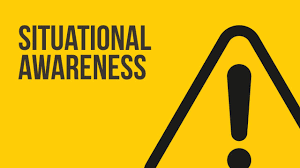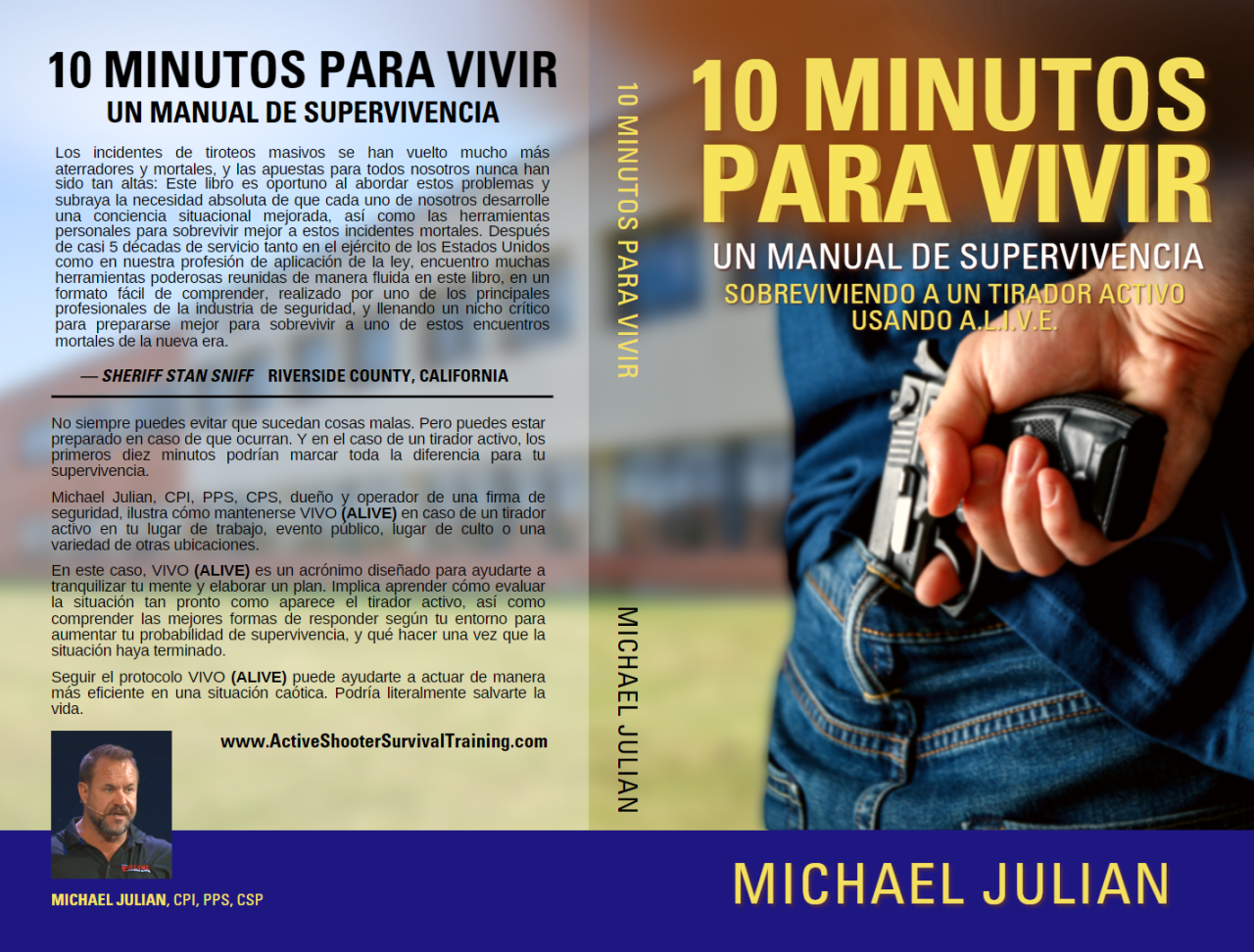"Michael Julian has written an excellent book. Practical, detailed, and a potential life saver if you find yourself in the midst of a targeted attack."

Situational Awareness Techniques That Can Save Your Life During an Active Shooter Event
In an active shooter situation, every second counts. The ability to notice something “off,” interpret what’s happening, and act quickly can make all the difference between safety and tragedy. That’s why situational awareness—the ability to perceive and understand your surroundings—is at the heart of the A.L.I.V.E. Active Shooter Survival Training method.
The good news is, situational awareness isn’t something you’re born with—it’s a skill anyone can learn and sharpen with practice.
What Is Situational Awareness?
Situational awareness means staying alert to what’s happening around you so you can identify potential threats and make quick, informed decisions. It’s not about living in fear—it’s about living prepared.
In an active shooter scenario, even a few seconds of early awareness can give you the time you need to escape, take cover, or take action.
Techniques to Improve Your Situational Awareness
1. Stay Alert—Not Anxious
You don’t need to be paranoid to be prepared. The key is to stay present and observant, especially in unfamiliar or crowded environments. Notice the exits, the people, and the overall mood of a room.
🧠Tip: When entering a new place, take a quick “mental snapshot” of the environment—exits, obstacles, and areas where you could hide or escape if needed.
2. Trust Your Instincts
Your intuition is a powerful safety tool. If something feels off—a person’s behavior, a strange noise, or an uneasy feeling—listen to it.
âš ï¸ Remember: It’s better to be momentarily cautious than permanently caught off guard.
3. Limit Distractions
We live in a world filled with phones, headphones, and screens. But these distractions can make you vulnerable in public spaces.
ðŸ"± Practice: When walking through a parking lot, store, or building, keep your head up and your attention outward—not buried in your phone.
4. Identify Exits and Barriers
Always know at least two ways out of any room or building. In a crisis, confusion can cloud judgment, so having those options already in mind can save precious seconds.
🚪 Tip: When attending an event, restaurant, or meeting, take a quick look around—where’s the nearest door, window, or secondary escape route?
5. Observe Behavior, Not Just Appearances
Many active shooters show signs of distress, anger, or unusual behavior before an attack. Pay attention to emotional energy, movements, and tone, not just how someone looks.
ðŸ'€ Example: If someone seems unusually nervous, angry, or out of place for the environment, trust your instincts and distance yourself.
How Situational Awareness Fits Into the A.L.I.V.E. Method
Situational awareness is the foundation of the A.L.I.V.E. Survival System:
-
A – Assess: Constantly evaluate your surroundings for potential threats.
-
L – Leave: If danger arises, move toward safety immediately.
-
I – Impede: If you can’t escape, barricade and block entry points.
-
V – Violence: As a last resort, fight back with full commitment.
-
E – Expose: When safe, call 911 and help others stay calm and informed.
The “A” in A.L.I.V.E.—Assess—isn’t just the first step, it’s the most critical. You can’t act on what you don’t notice.
Awareness Is the Key to Survival
The world can change in an instant—but awareness gives you control. When you practice situational awareness techniques daily, you’re not just reacting to danger—you’re staying one step ahead of it.
At A.L.I.V.E. Active Shooter Survival Training, we teach individuals, employees, and organizations how to turn awareness into action—and fear into preparedness.
ðŸ'‰ Contact Us Today to schedule training for your team, school, or organization.
Stay alert. Stay prepared. Stay A.L.I.V.E.
Hear From An A.L.I.V.E. Student Survivor Of The Las Vegas Massacre
"As a retired 32 year law enforcement veteran, with several years of SWAT and tactical experience, I learned some different unique perspectives as it pertains to civilians dealing with active threat situations. Very good class for civilians who may have never experienced reacting to a life and death stressful situation."
- Christopher C.
A.L.I.V.E. STANDS FOR:
Assess
Assess the situation quickly
Leave
Leave the area if you can
Impede
Impede the shooter
Violence
Violence may be necessary
Expose
Expose your position carefully for safety
INDUSTRIES WE SERVE
Corporations
Government
Healthcare
Places of worship
Schools & Universities
Venues
MICHAEL JULIAN
Creator of A.L.I.V.E.
A.L.I.V.E., which stands for Assess, Leave, Impede, Violence, and Expose, was created in 2014 when Michael began teaching his Active Shooter Survival philosophy throughout the United States. His book on the subject, 10 Minutes to Live: Surviving an Active Shooter Using A.L.I.V.E. was published in 2017 and the online version of the A.L.I.V.E. Training Program was launched in 2019 and is now part of the corporate security training program for companies throughout the world.

Why A.L.I.V.E. Active Shooter
Survival Training Program?
The A.L.I.V.E. Active Shooter Survival Training Program is a comprehensive training program designed to provide individuals with the necessary skills and knowledge to survive an active shooter incident. Its emphasis on situational awareness and decision-making makes it a practical and effective approach to active shooter situations. By empowering individuals to take proactive measures to protect themselves and others, the program can help prevent tragedies and save lives.



